The 6 best dry cat foods, approved by vets and tested by owners
We've found the best dry cat food to keep your hungry kitty healthy
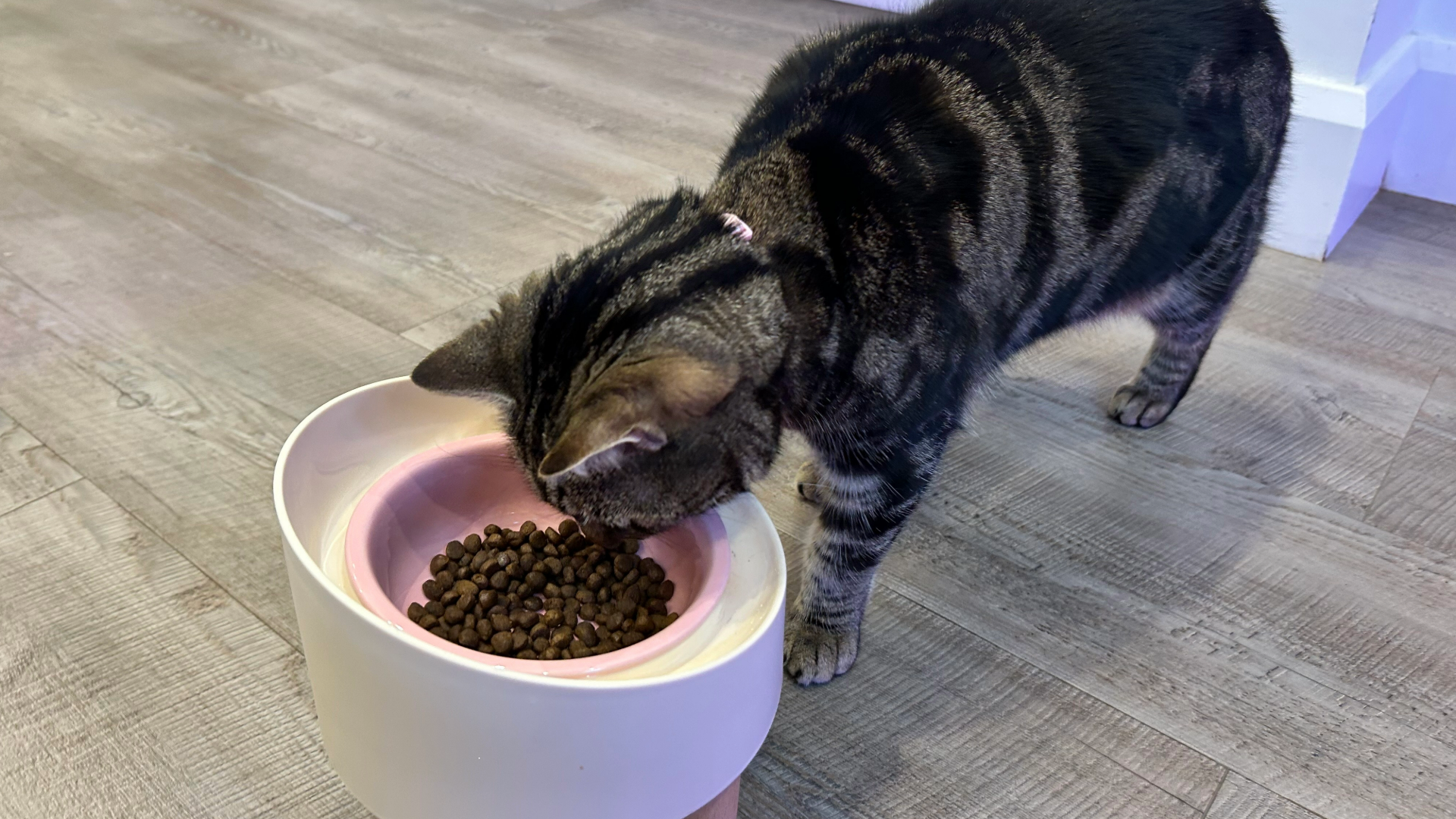
- Quick list
- 1. Best raw food
- 2. Best grain-free food
- 3. Best premium food
- 4. Best for sensitive stomachs
- 5. Best for mature cats
- 6. Best for kittens
- How we tested
- How to choose
- How much dry food should I feed my cat?
- Should you add water to your cat's dry food?
- Is dry cat food better than wet cat food?
- Is dry cat food good for your cat's dental health?
- Does dry cat food go stale?
- What are the benefits of feeding dry cat food?
Choosing the best dry cat food can feel like an overwhelming decision, given the sheer number of products on the market. From air-dried and steam-dried, to raw cat food and grain-free – it’s tricky enough to understand what all these terms mean, let alone make an informed choice! So, I don’t blame you if you’re feeling a little bit lost.
To make this decision easier for you, I've rounded up the best options below, all of which have been approved by vets and tested by us (real pet parents, by the way). I didn’t just select any random food; I sifted through hundreds of products, filtering out any options with subpar ingredients.
I also consulted expert vets Dr. Hannah Godfrey and Dr. Joanna Woodnutt to understand what makes the best dry cat food, using their advice to compile my top picks. All of these products feature a high-quality protein source as the first ingredient and have nutritious recipes to keep your cat healthy – here's what we recommend in 2025:
The quick list
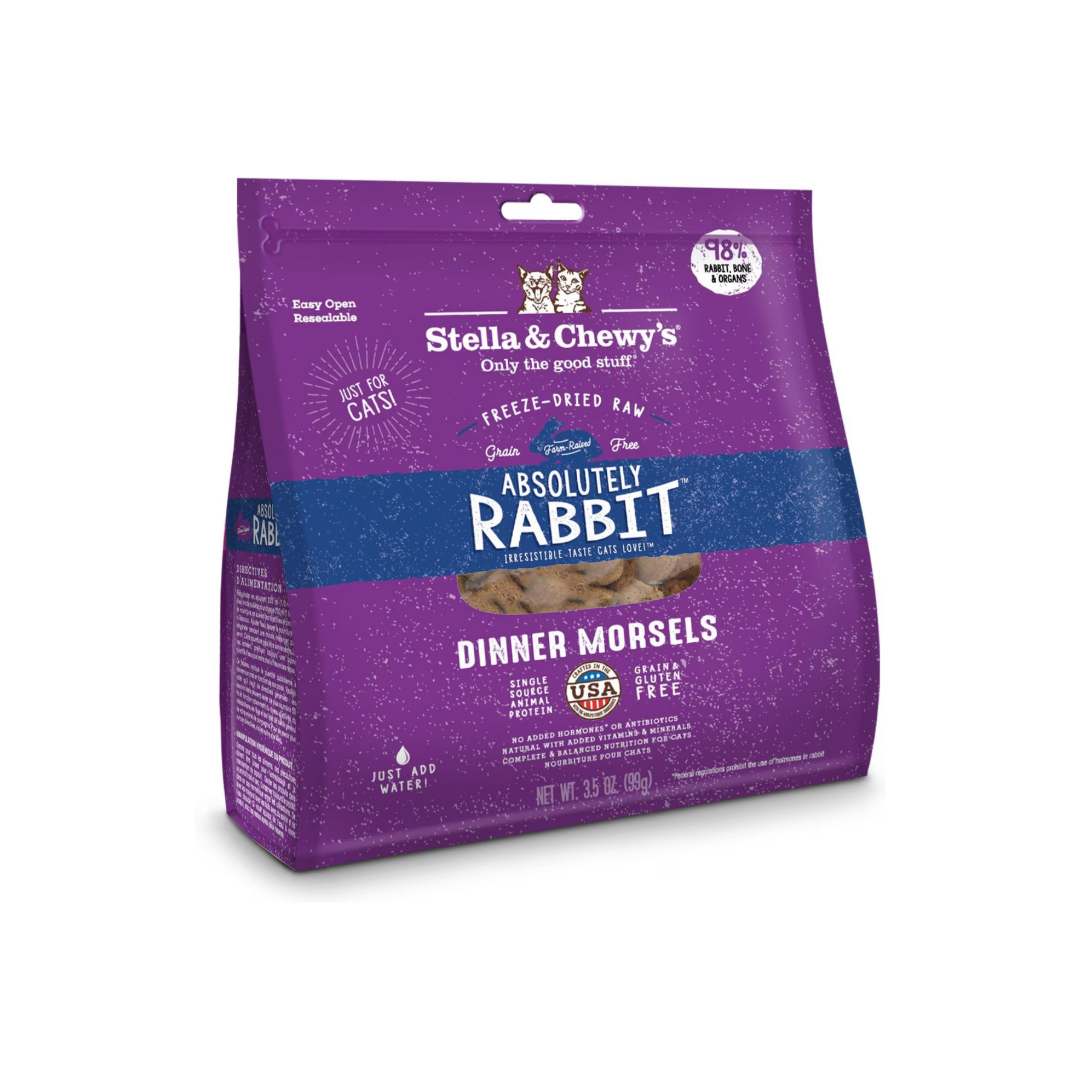
The best raw dry cat food
These rabbit-flavored bites are packed with protein, containing everything your cat needs to thrive. With probiotics for digestion and taurine for overall health, we highly recommend this vet-approved formula.
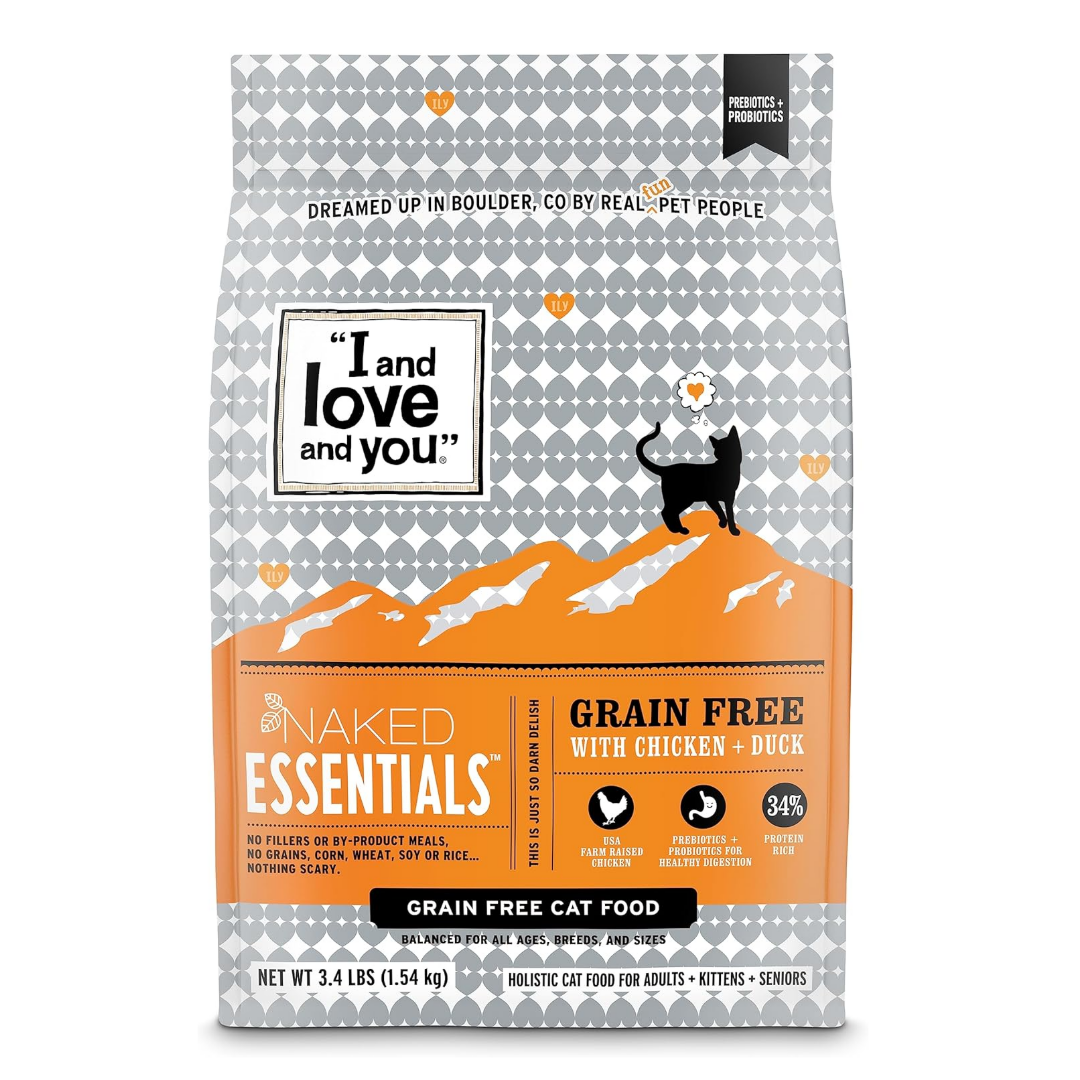
The best grain-free dry cat food
This grain-free cat food is full of goodness, including high levels of protein to support muscle growth, and prebiotics and probiotics to aid digestion. It's free from fillers, by-product meals, soy, wheat, rice, and corn, too.
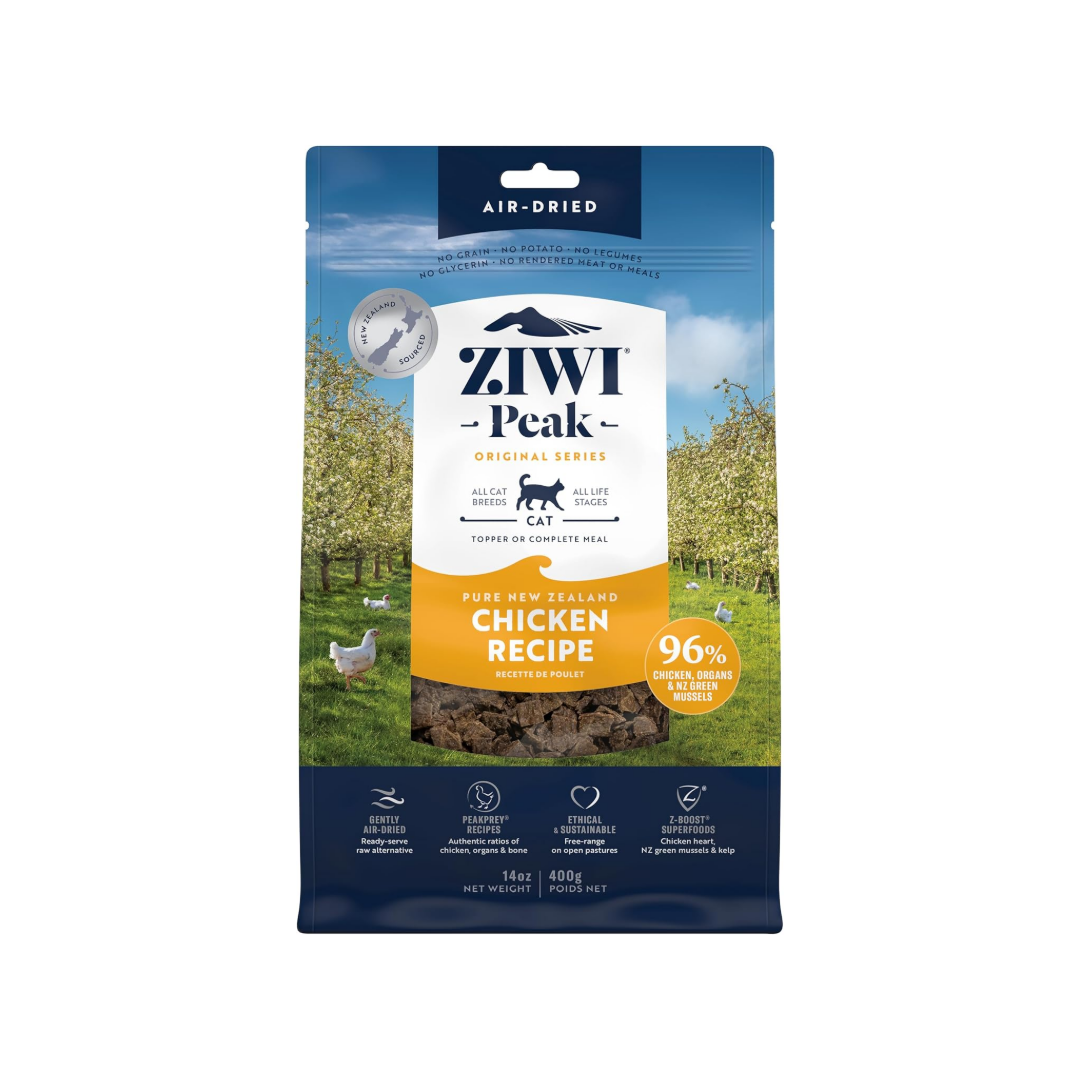
The best premium dry cat food
ZIWI is a premium brand for a reason; their recipes are nutritionally complete, using ethically sourced meat from New Zealand. If you're concerned about your cat's water intake, this formula has the highest moisture content.
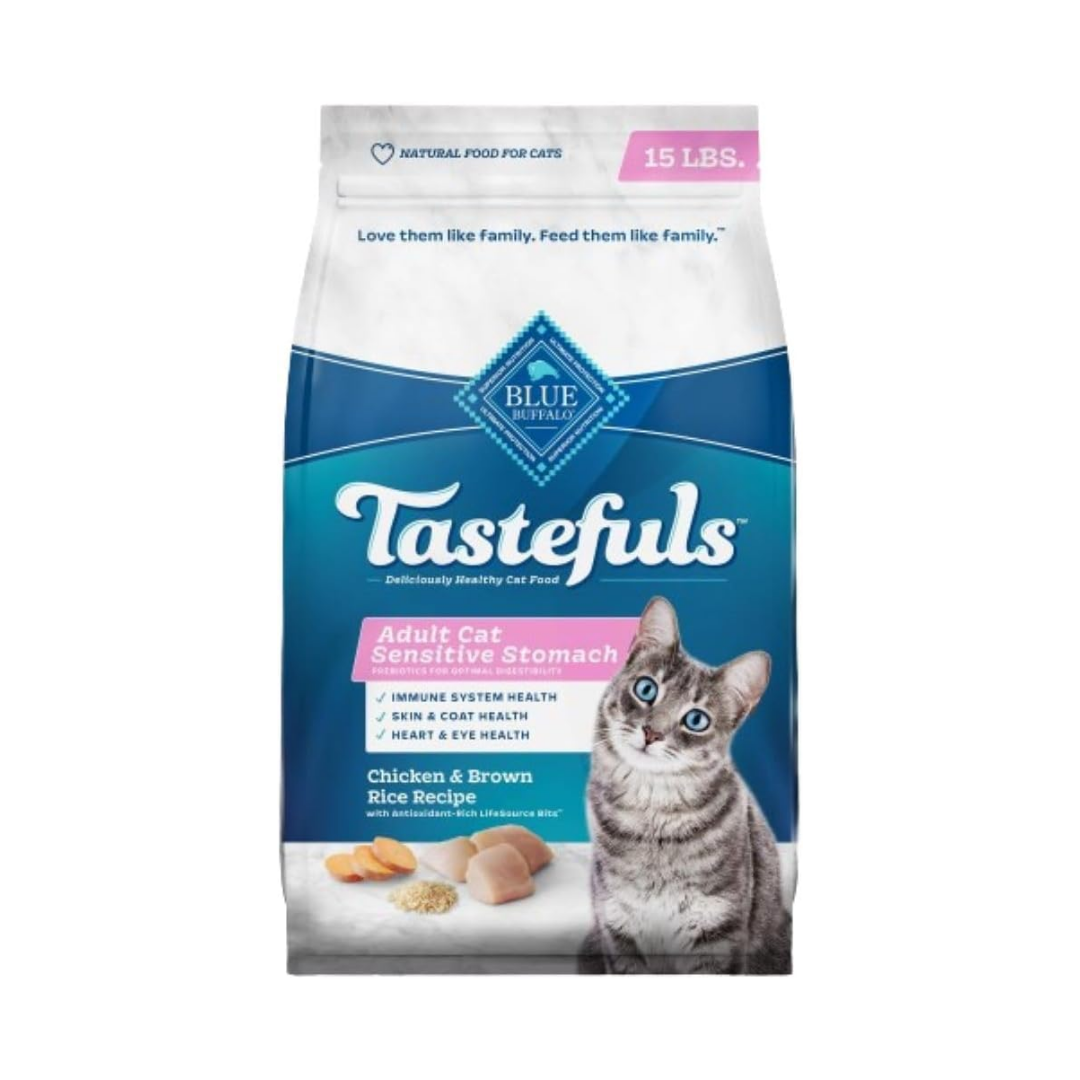
The best dry cat food for sensitive stomachs
Made with prebiotics and probiotics, this dry food is a good choice for cats with sensitive stomachs. The recipe also contains a source of omega-3 and omega-6, which helps support coat, skin, eye, and heart health.
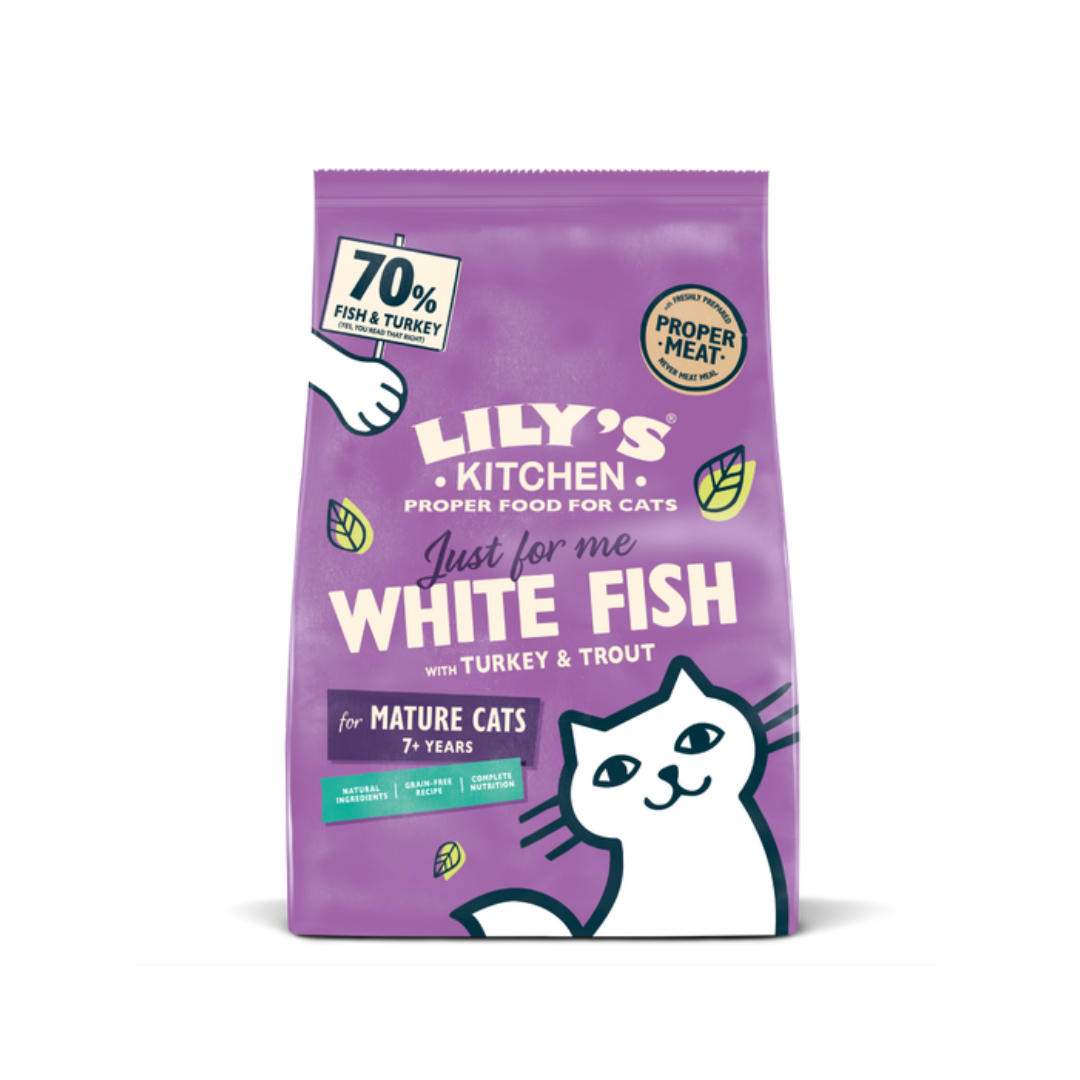
The best dry cat food for mature cats
Got a mature cat? We recommend this dry food by Lily's Kitchen. The formula contains omega-3 and omega-6, which help reduce joint and skin inflammation, as well as glucosamine and chondroitin, renowned for supporting joint health.
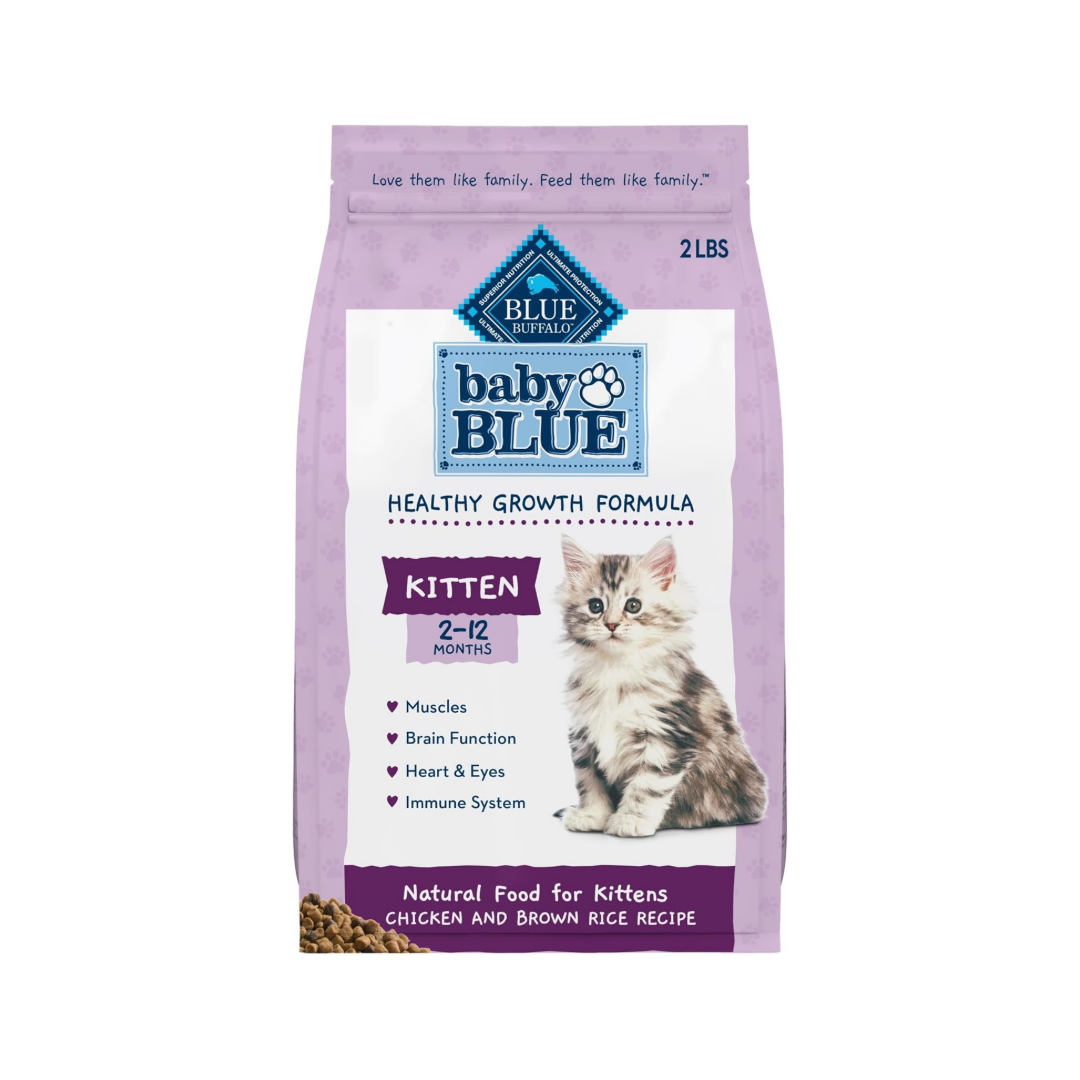
The best dry cat food for kittens
This dry cat food is the perfect choice for kittens, containing the correct levels of protein and fats to ensure they get the best start in life. The recipe features omega-3 and omega-6, as well as prebiotics and probiotics to help with their digestion.
The best dry cat food we recommend in 2025
Why you can trust PetsRadar
The best raw dry cat food

1. Stella & Chewy's Absolutely Rabbit Dinner Morsels Freeze-Dried Raw Cat Food
Specifications
Reasons to buy
Reasons to avoid
As those of you who have cats that like to bring in the occasional woodland creature will testify, cats love the taste of raw meat, and this is the next best thing—especially if your cat dwells indoors. Proudly boasting organic credentials, it’s free from grain, gluten, and any other artificial preservatives you care to name.
Freeze-dried cat foods lock in the nutrients while preserving those tasty natural flavors, ensuring your cat gets all the goodness. The recipe lists meat as the first ingredient (meaning it’s the highest quantity) and uses a single-source protein, which could be good news for cats with allergies. Since rabbit is a novel protein (meaning it’s not commonly found in cat food), this is another reason why it’s a strong contender for allergy-prone cats.
However, you need to be careful when considering whether it’s the right food for your cat—some cats don’t do too well with raw meat diets, even if you only intend to use this as a meal topper.
Dr. Godfrey says: "Perhaps the major benefit of this dry cat food is that you can choose to add water to it or not. While dry cat food is great for keeping a cat’s teeth clean and healthy for longer, cats need to drink more than they would on wet food, and there are potential links between cats being chronically slightly dehydrated and kidney disease."
This product is currently with our tester; we'll be adding our full verdict soon.
The best grain-free dry cat food

2. I And Love And You Naked Essentials Dry Cat Food
Specifications
Reasons to buy
Reasons to avoid
This tasty chicken recipe has GMO-free protein as the number one ingredient, along with essential vitamins, minerals, and amino acids that help keep your cat at their healthiest. It also contains prebiotics and probiotics, which are helpful for digestion, the immune system, nutrient absorption, and gut health.
If your cat has any intolerances, you'll be pleased to hear that this food is free from grain, corn, wheat, rice, soy, or oats, and there are six different flavors to suit their requirements. You also won't find any artificial preservatives, flavors, colors, fillers, or animal by-products, which is always good to see.
As well as being a highly nutritious option, this food is one of the most affordable dry cat foods in this guide, costing 27 cents per ounce. Considering I and Love You is a premium brand that uses high-quality ingredients, we think this is excellent value for money compared to some of its competitors.
Dr. Godfrey says: "This recipe is balanced and nutritionally complete, containing lots of protein, which cats need for growth and repair of their tissues. It’s grain-free, which is beneficial for those with a specific allergy, but actually, grains aren’t inherently bad for cats, and some can be a good source of nutrition, as long as meat is the main ingredient. It also contains prebiotics and probiotics, which are great for maintaining gut health and supporting the immune system."
The best premium dry cat food

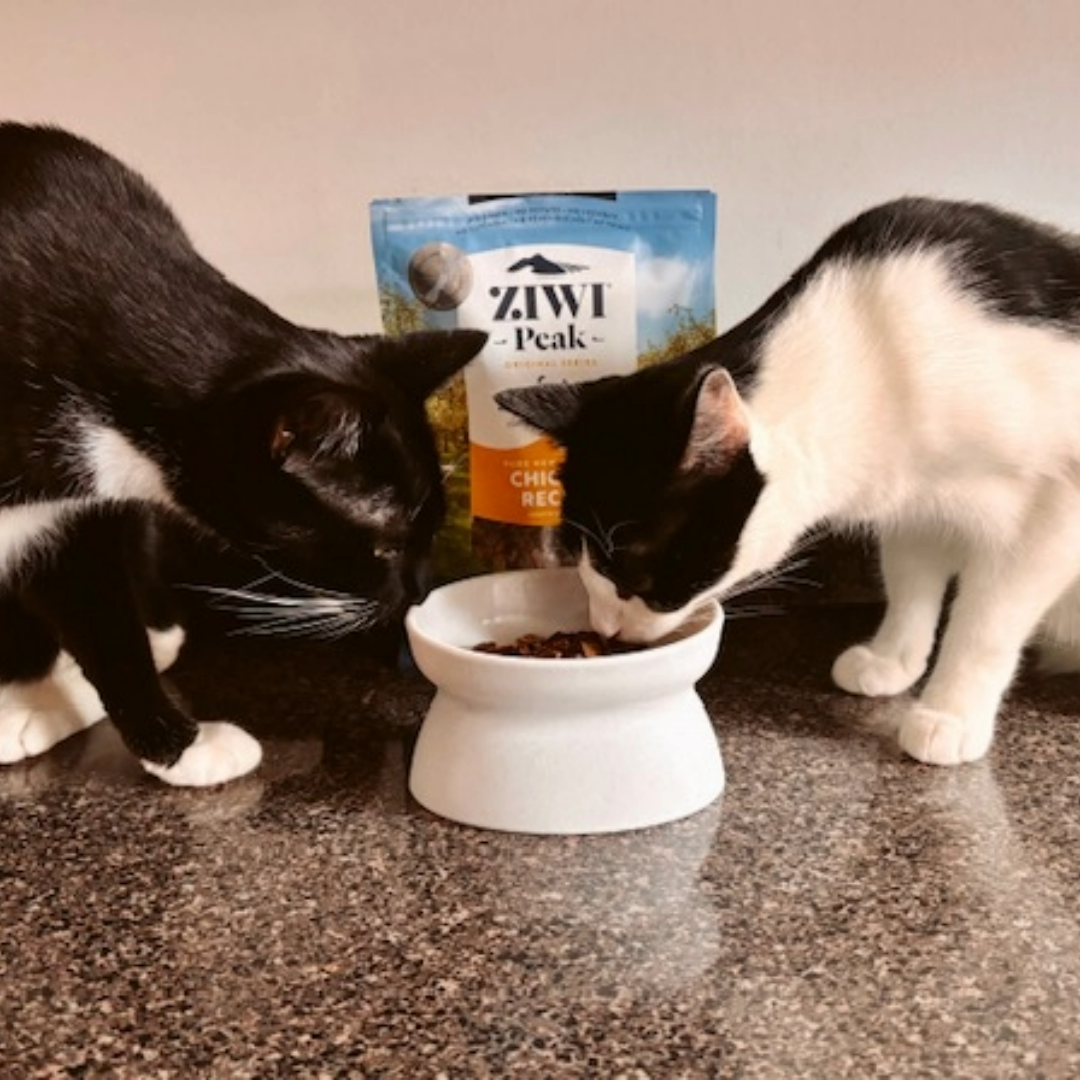
3. ZIWI Peak Air-Dried Cat Food
Specifications
Reasons to buy
Reasons to avoid
When it comes to quality ingredients, ZIWI is a brand that never lets us down, and their air-dried cat food is no exception. The first seven (yes, seven!) ingredients are a protein source, all of which are ethically sourced from New Zealand and are free-range or wild-caught. If this is particularly important to you, have a read of ZIWI's farming policy.
The recipe contains green mussels, which are an excellent source of omega-3s, supporting skin, coat, eye, and brain health. The formula also includes organic kelp, which contains vitamins like iodine, excellent for thyroid regulation. You won't find any grains, potatoes, glycerin, or rendered meat or meals inside.
While we believe the price tag is justified by the quality, but if you want a more affordable option, we recommend choosing the Blue Buffalo food instead.
Our tester, Diana, says: "My cats loved it! Moving forward, I’ll use it as a food topper. It seals easily to keep its freshness. It's great value – packed with natural ingredients, and you recognize at least 90% without Googling. Plus, loads of protein, which is perfect for cats!"
Dr. Godfrey says: "While air-drying might be a safer alternative to feeding raw, reducing some of the risks like gut damage, blockages from bones, or illness caused by bacteria like Salmonella and Campylobacter, air drying can, in some instances, reduce the nutritional value.
"However, ZIWI specifies that the cat food is gently air-dried, retaining nutrients that could be destroyed during more vigorous processing. It also contains more moisture than some other dry cat food brands, which may reduce the risk of kidney disease."
This product is currently with our tester; we'll be adding our full verdict soon
The best dry cat food for sensitive stomachs

4. Blue Buffalo Tastefuls Sensitive Stomach Adult Dry Cat Food
Specifications
Reasons to buy
Reasons to avoid
Has your cat got a sensitive stomach? If the answer is yes, this dry food is an excellent choice, thanks to the prebiotics that support a healthy gut and better digestion.
Take a look at the ingredients list, and you'll find chicken as the first ingredient, which means there's a decent amount of protein inside, important for muscle growth. You'll also see essential amino acids (like taurine and DL-methionine), as well as vitamins and minerals (like calcium carbonate and potassium chloride) to support your cat's overall health.
This food is also the most affordable option in this guide, costing only 24 cents per ounce. So, if you're after something a bit more affordable (without compromising on quality), this is your go-to choice.
Dr. Godfrey says: "Chicken and rice are ingredients that are easy to digest, making this a good choice for cats who are prone to vomiting and diarrhea. It also contains prebiotics, which can help promote a healthy gut and support the immune system."
This product is currently with our tester; we'll be adding our full verdict soon
The best dry cat food for mature cats

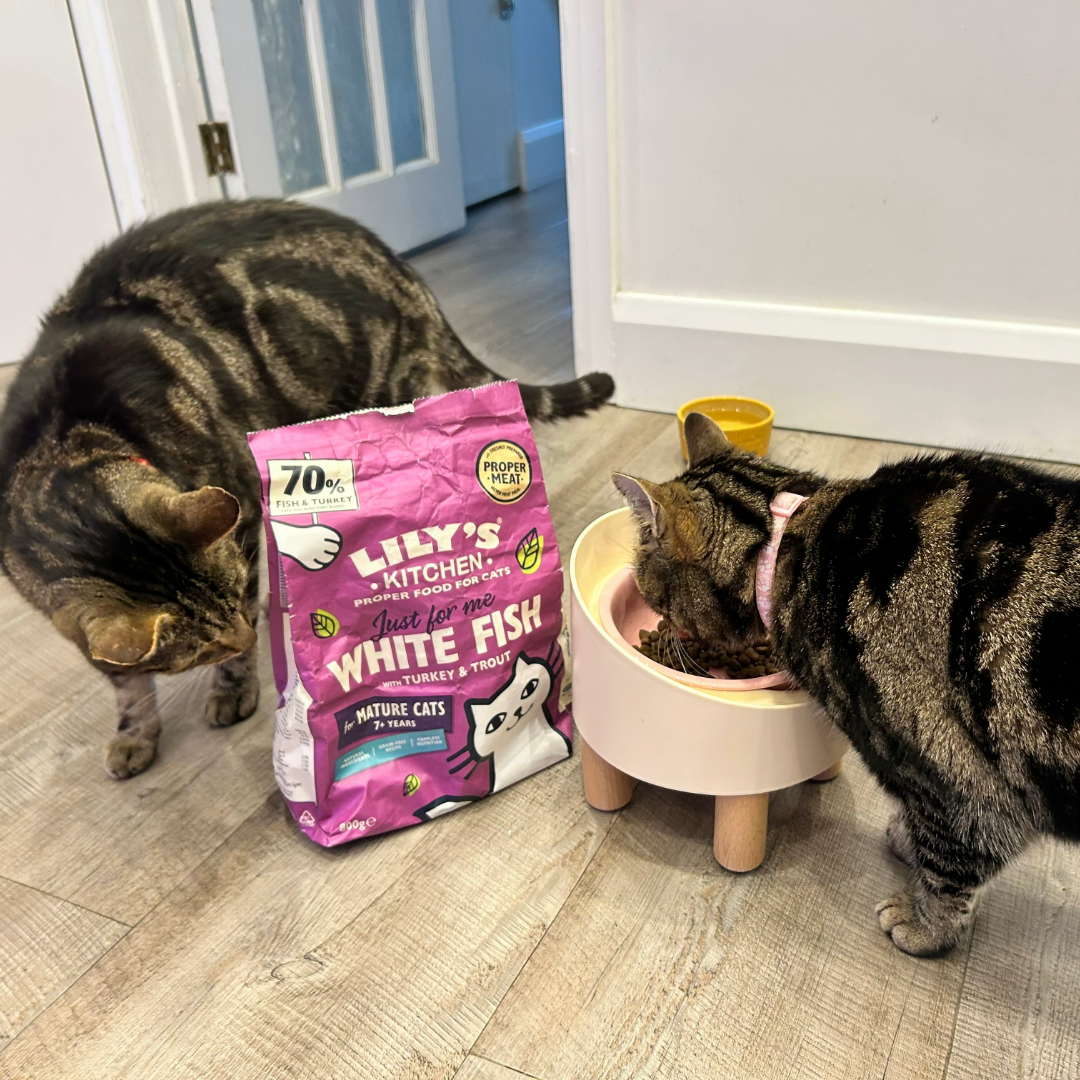
5. Lily’s Kitchen Dry Food for Mature Cats
Specifications
Reasons to buy
Reasons to avoid
Lily's Kitchen is another brand I know and trust – my cats seem to like every product they try. During my search for the best cat food for senior cats, this clean and healthy recipe caught my eye, and I just had to try it out. After five months of testing, I can confirm that this is still the best dry food for seniors, and my cats, Chilli and Nala, are obsessed with it!
The formula contains protein sources as the first three ingredients, along with vitamins A, D3, and E, plus taurine and L-carnitine. It also includes glucosamine and chondroitin sulfate, which help support joint health and are particularly beneficial for older cats.
The only downside is that the kibble has quite a potent fish smell, which isn't the nicest thing if you use your hands to take it out of the bag. However, the packaging conceals this smell, and it's never an issue once the food is in the bowl. It definitely hasn't stopped me from using it! While the packaging isn't resealable, due to the material, you can easily fold it and scrunch it up, and it will stay in place.
Dr. Godfrey says: "This recipe contains essential fatty acids, omega-3 and omega-6, which support overall health and reduce inflammation of the skin and joints, making it a great choice for cats with sensitive skin or arthritis. It also contains supplemented ingredients like prebiotics, glucosamine, and chondroitin to promote a healthy gut and immune system and improve joint health."
The best dry cat food for kittens

6. Blue Buffalo Baby Blue Natural Kitten Dry Cat Food
Specifications
Reasons to buy
Reasons to avoid
It might be tempting to feed your kitten adult food, but it's super important to provide them with a diet that's appropriate for their life stage – especially since little ones require three times more calories!
If you're searching for high-quality kitten food, this offering by Blue Buffalo won't disappoint and contains all the nutrients your fur baby needs for a good start in life. From omega-3 and omega-6 for skin and coat health to antioxidants for the immune system, this formula is packed with goodness and has the right amount of protein and fats.
The recipe is free from meat by-products, corn, wheat, and soy, as well as artificial colors and flavoring.
Dr. Godfrey says: "This dry cat food recipe contains the essential fatty acids omega-3 and omega-6, as well as being rich in antioxidants. These ingredients are great for a cat’s overall health. The nutrients are protected during production, using only gentle heating to avoid nutrient breakdown."
This product is currently with our tester; we'll be adding our full verdict soon
How we tested the best dry cat food
During the research phase, I found the best dry cat food by checking the following:
Is the formula vet-approved? I consulted our team of in-house vets to determine if the food is a good choice.
Are the ingredients healthy, safe, and nutritional? I researched every single ingredient on the label to decide whether it's something you'd want to put into your cat's body. If we had any concerns, it was removed from the list!
I trolled through hundreds of products and was very particular about the quality of ingredients, narrowing it down to just six options. During the testing procedure, I asked pet parents the following questions:
- Did your cat enjoy the food?
- Do you think the food offers good value for money?
- Is the packaging easy to store?
- Does your cat seem satiated after eating, compared to their regular food?
Our review panel
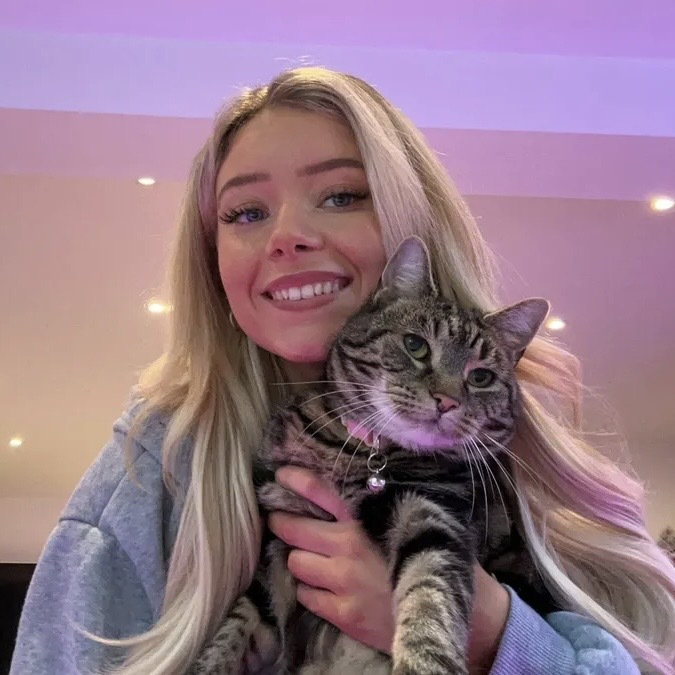
Megan Milstead, Staff Writer
Megan tested the Lily’s Kitchen Dry Food for Mature Cats with her cats, Nala (pictured) and Chilli.
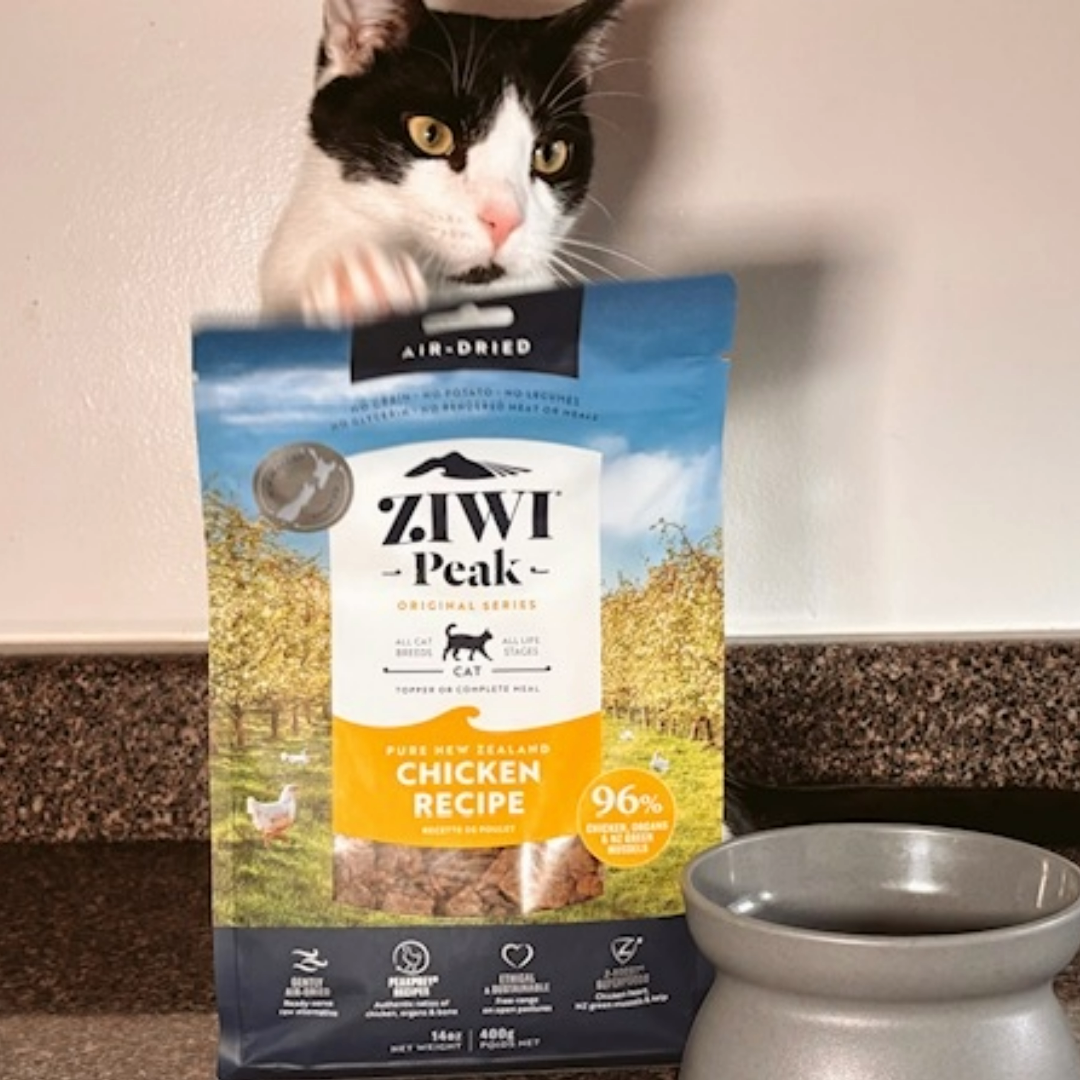
Diana Albuquerque, Tester
Diana tested the ZIWI Peak Air-Dried Cat Food on her cats August and Laszlo.
For more information, check out our page on how we test.
How to choose the best dry cat food
Finding the best dry cat food to suit your feline friend can be challenging. If you're not sure which is the right choice for your kitty, there are a few important things to consider when purchasing.
Age: First, consider your cat’s age. Dry cat foods are often formulated and specifically designed for the age and size of your kitty. So whether you have older or younger cats, you’ll need a formula to provide the right amount of nourishment. If you're still not convinced, check out our feature that compares kitten food vs cat food.
Protein and fat sources: Look for quality first ingredients such as real chicken, lamb, turkey, salmon, and tuna, which are all rich in protein. Chicken liver and heart are both rich in taurine, an amino acid that humans produce but cats cannot. Generally, focus on foods that contain calcium, fats, and essential vitamins. And try to avoid those with artificial fillers designed to make your cat feel full, and lack any nutritional value.
Dr. MacMillan says: "Ingredients are listed in order of weight, so having a good-quality protein source higher up that list is desirable."

Dietary restrictions: Consider your cat’s dietary restrictions, needs, or conditions, such as allergies or weight issues. There are some dry cat food brands tailored to specific dietary needs to help maintain optimal health.
Value for money: Cost and value for money are other factors, as cat food can often be expensive. Choose a suitable quality brand within your budget and avoid the latest expensive trends. Of course, you need to consider your cat’s tastes and preferences as to what they like and dislike. Whether they prefer chicken or tuna, or large or smaller-sized kibbles, this will influence what you purchase. Plus it will make your beloved cat more happy, healthy, and content in the long run!
Food standards: Dr. MacMillan says: "When choosing a dry cat food there are a few things to look out for. Firstly, when shopping in the US, you should check that the diet meets standards set by The Association of American Feed Control Officials (AAFCO). An AAFCO-approved diet will give you confidence that the food has been properly formulated to meet all your pet’s nutritional needs. Look for this approval on the packaging."
You should also check if the brand has a veterinary nutritionist on their team, clear feeding guidelines, and a comprehensive ingredients list.
How much dry food should I feed my cat?
How much should I feed my cat? As a rule of thumb, you should always be checking the product packaging guidelines for how much of it you should feed to your cat as this can depend on their weight and build.
But you are safest to consult a vet on this if you want to feel extra confident that your moggy is being fed the right amount and that the food fits your pet’s unique dietary requirements. A vet will also be able to advise on a good wet-to-dry food ratio for your cat’s diet.
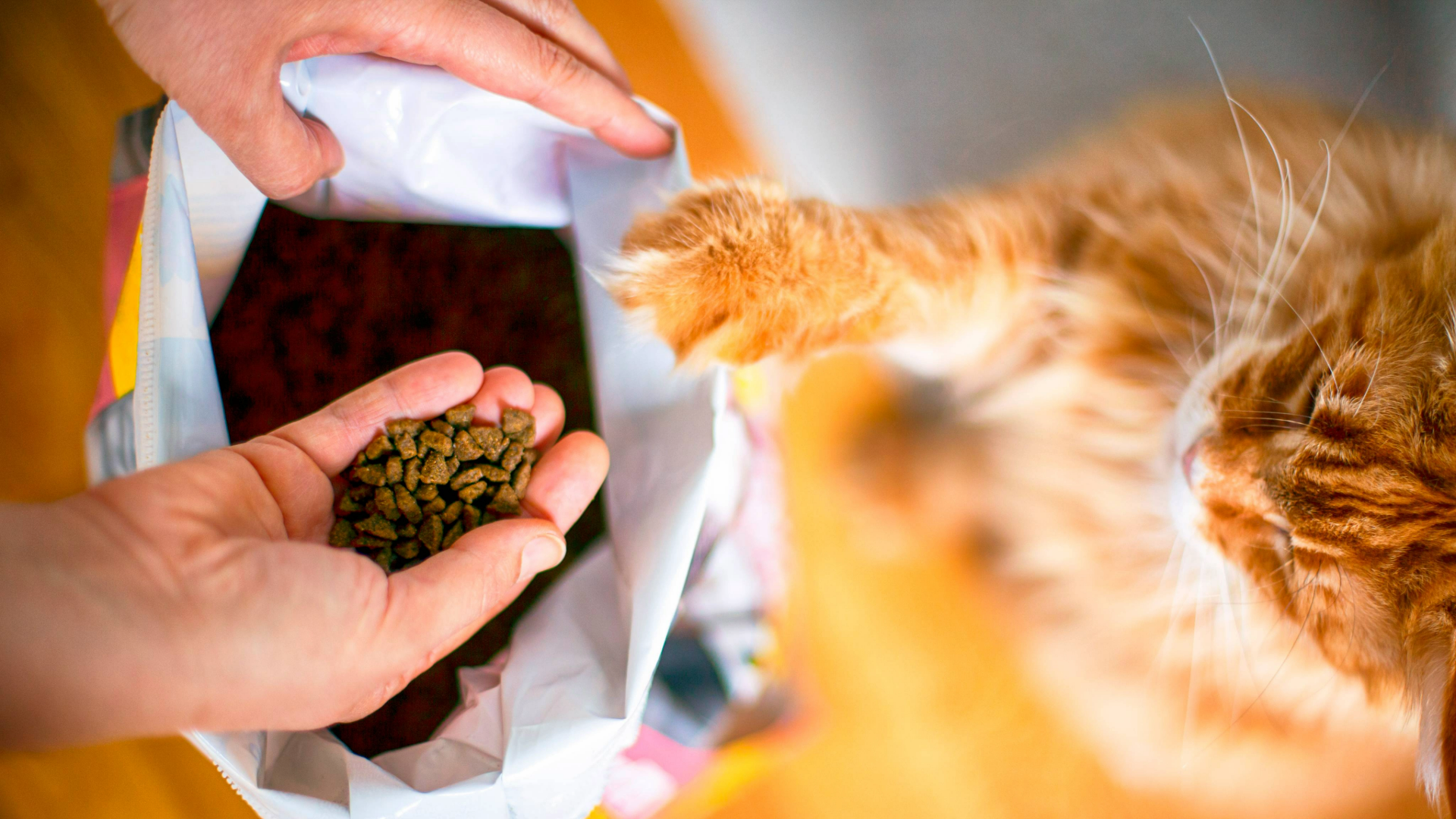
Should you add water to your cat's dry food?
One of the biggest concerns that pet owners have around dry cat food is the lower moisture content when compared to wet food. In the wild, cats don’t drink a lot of water, instead getting most of it through their diet. This behavior has carried over to domesticated cats, which is why you’ll rarely see your furry friend drinking from their water bowl.
One of the best ways to help your kitty up their water intake is by adding water to your cat's dry food, and there is plenty of evidence out there to support adding water to your cat’s dry kibble. A study in the British Journal of Nutrition showed that cats who were given hydrated dry cat food had higher daily water intakes than those who relied on drinking water alone, so it really does work.
As an added benefit, adding water to your cat’s food will keep them full for longer, reducing their appetites and aiding with weight loss for cats. Research published in the Journal of Nutritional Science showed that cats fed on purely dry food diets had higher weight gain when compared to those fed on hydrated dry food diets. So, as long as your feline doesn’t turn their nose up at wetted food, it’s definitely something you should consider.
Dr. Rebecca MacMillan says: "In most cases, it is not necessary to add water to dry cat food unless your cat prefers their food a little softer. Young kittens may need their kibble soaked when it is first introduced, as well as cats recovering from oral surgery or dental treatment.
"Adding water to dry food can be helpful for cats suffering from cystitis or kidney issues, to help increase their water intake. However, most healthy cats will not need water added to their dry kibble."
Is dry cat food better than wet cat food?
Is dry cat food best? Woodnutt tells us that both wet and dry food can provide complete nutrition for your cat, and either is a suitable choice.
“However,” she says, “A wild cat’s diet is about 80% moisture, and this means they don’t need to drink much. Our domestic cats retain this low thirst drive, even when being fed a dry diet that’s just 10% moisture. This could theoretically lead to problems, and it’s true that dry diets are sometimes associated with obesity and urinary tract disease.”
“Nonetheless, dry food has the benefit of being easier to leave down or hide in puzzle feeders, and some dry foods benefit dental health. For this reason, I advise that cats are fed a combination of wet and dry food, with the majority being wet food,” Woodnutt advises. Dry food should be a high-quality dental diet in order to get the best benefits for dental health.
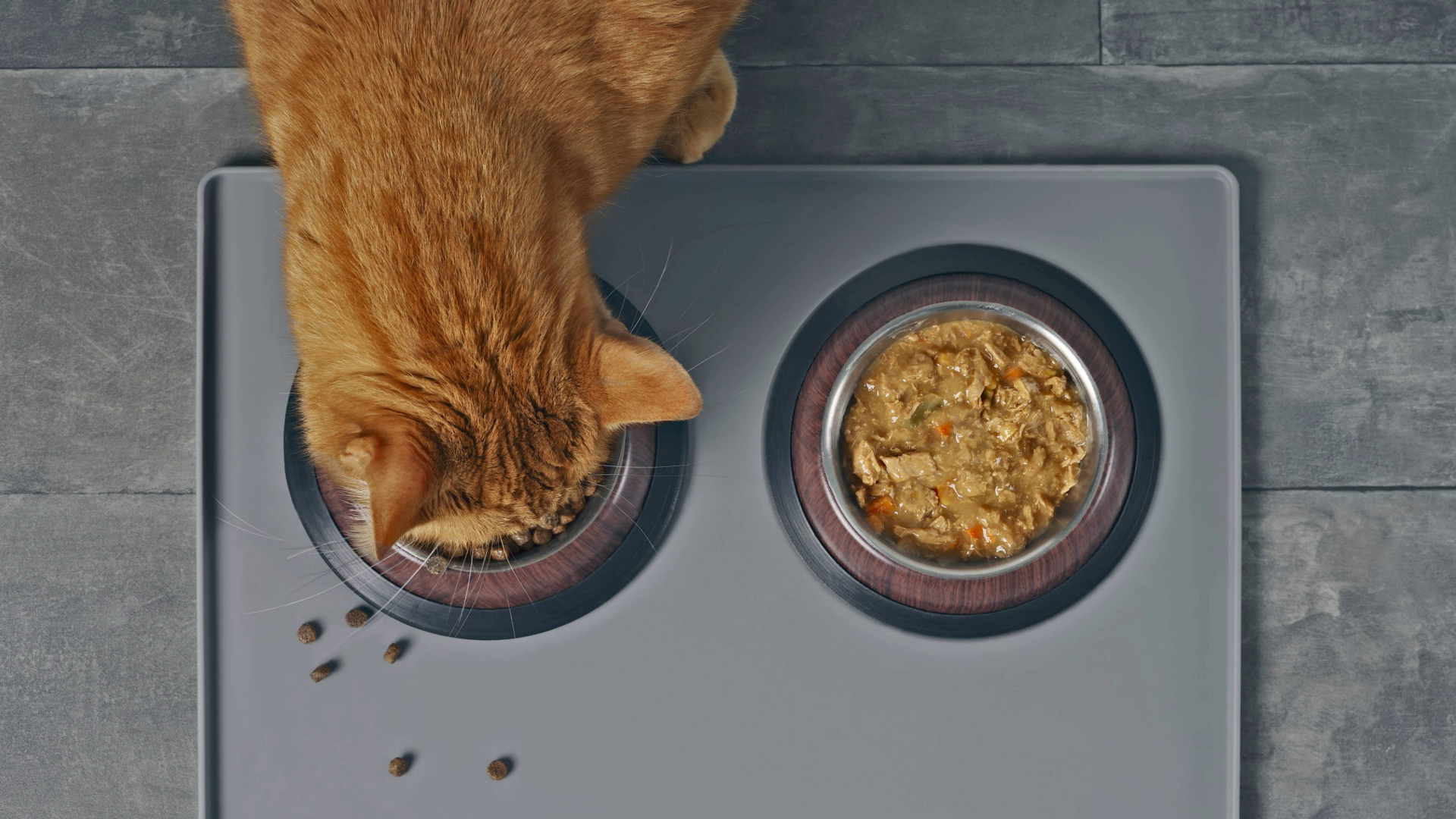
Is dry cat food good for your cat's dental health?
Is dry food the best choice for your cat's teeth? Dr. Woodnutt says that it’s a myth that dry food in general is good for dental health – there’s no solid evidence that either type of food is better or worse for your cat’s teeth. However, some diets have been developed that are specifically designed to be better for the teeth.
“These ‘dental diets’ are dry cat foods that have been designed to break in such a way as to ‘clean’ the teeth. They may also include ingredients that prevent the formation of tartar. A list of the dry diets that have proven themselves to be better for the teeth can be found on the Veterinary Oral Health Council website,” notes Woodnutt.
Does dry cat food go stale?
As you should with any pet food, check the 'best by' date on the packaging because the answer to this is yes. Often the product packaging will also recommend how best to store the cat food to help it keep fresher for longer.
The packaging is made to help keep the food fresh but sealing it properly after use and not leaving it out in the sun or somewhere particularly warm in your home will avoid it spoiling.
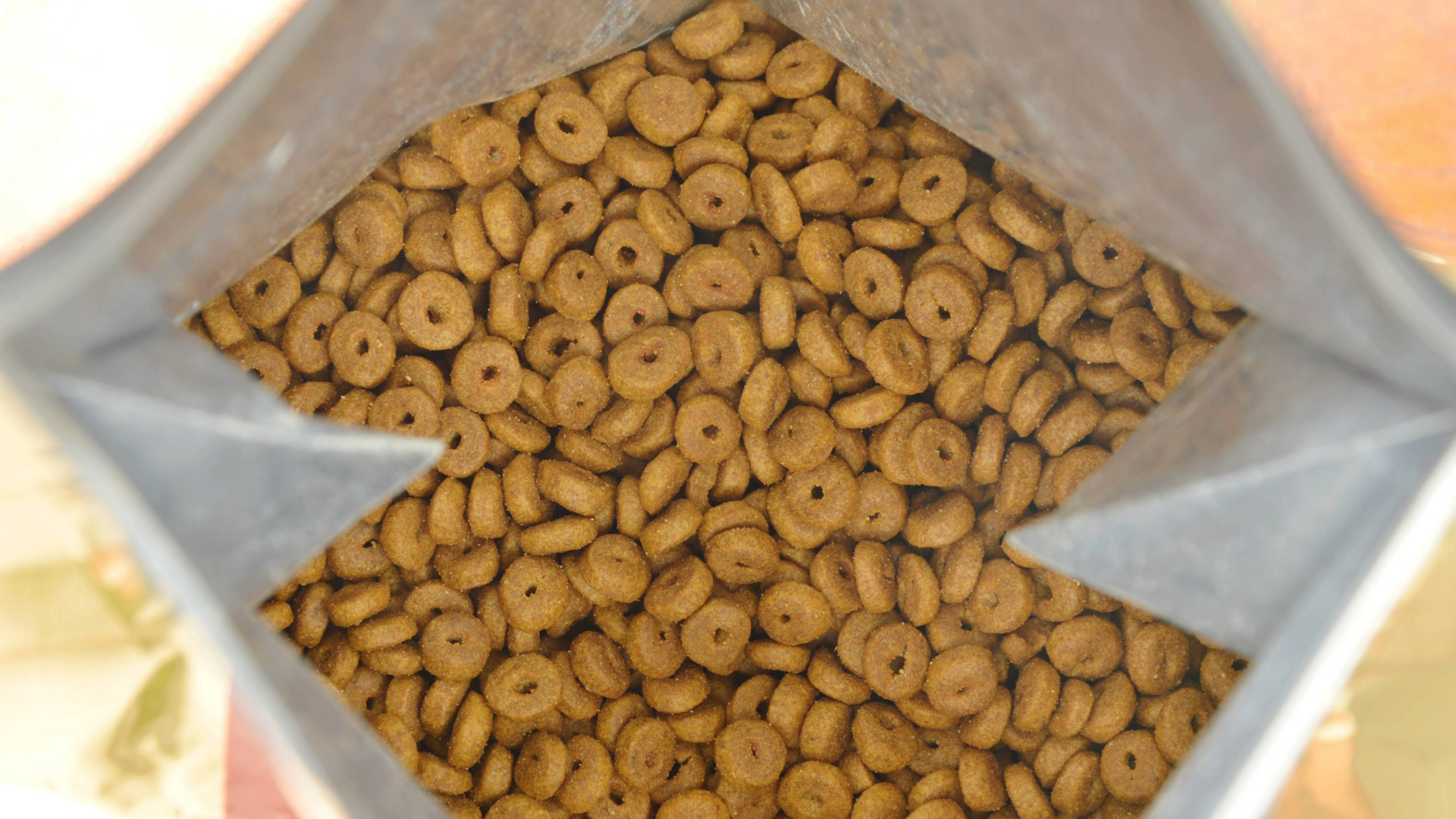
What are the benefits of feeding dry cat food?
Feeding the best dry cat food, also known as kibble, can have several benefits, but it's important to consider your cat's individual needs and preferences. Here are five advantages:
Convenience: Dry cat food is convenient. It has a longer shelf life, doesn't require refrigeration, and is easy to measure, weigh and store.
Cost-effective: Kibble is often more cost-effective than wet cat food, making it an attractive option for budget-conscious pet owners, especially in current times.
Portion control: It's easier to control portions and it can be particularly beneficial for cats prone to overeating and weight gain.
Convenient for free-feeding: Dry cat food is suitable for free-feeding, where you leave a bowl of kibble for your cat to eat at their convenience. This can be helpful for cats that prefer grazing throughout the day.
No refrigeration required: Unlike wet/canned cat food, dry cat food doesn't require refrigeration once the bag or box is opened, making it easier to manage, transport, and store.
If you are uncertain about any aspect of your cat‘s diet—the type, quantity, or frequency of feeding, consult with your vet to ensure that the chosen diet meets your cat's specific nutritional needs and gives you peace of mind.
If you're wondering, 'Can cats eat dry food only?' our vet's guide can help. Or, if your cat won't eat dry food, we have a few reasons why...

Megan is a Staff Writer at PetsRadar, covering news, features, buying guides, and reviews. As a cat mom to two tabbies, she is passionate about finding the best products to recommend to readers. She has a particular interest in pet health, which is why she researches every single ingredient on food labels and consults a team of vets before including a product.

Rebecca is a veterinary surgeon who graduated in 2009 from the Royal Veterinary College in London. She has a wealth of experience in first opinion small animal practice, having done a mixture of day-to-day routine work, on-call emergency duties and managerial roles over the years. She enjoys medicine in particular and she is proud to have recently achieved a BSAVA postgraduate certificate in small animal medicine (with commendation). She writes on various feline and canine topics, including behavior, nutrition, and health. Outside of work and writing she enjoys walking her own dog, spending time with her young family and baking

After graduating as a veterinarian from the University of Nottingham, Dr. Joanna Woodnutt went on to practice companion animal medicine in the Midlands. She quickly developed a love of consulting and helping clients with medical problems such as dermatology, behavior and nutrition - anything that involved helping clients understand their pets better. Jo started writing about pet health in 2017, realizing that it meant she could help even more pet parents. Since then, she has written for countless online and print publications and is a regular contributor for Edition Dog Magazine.
Get the best advice, tips and top tech for your beloved Pets
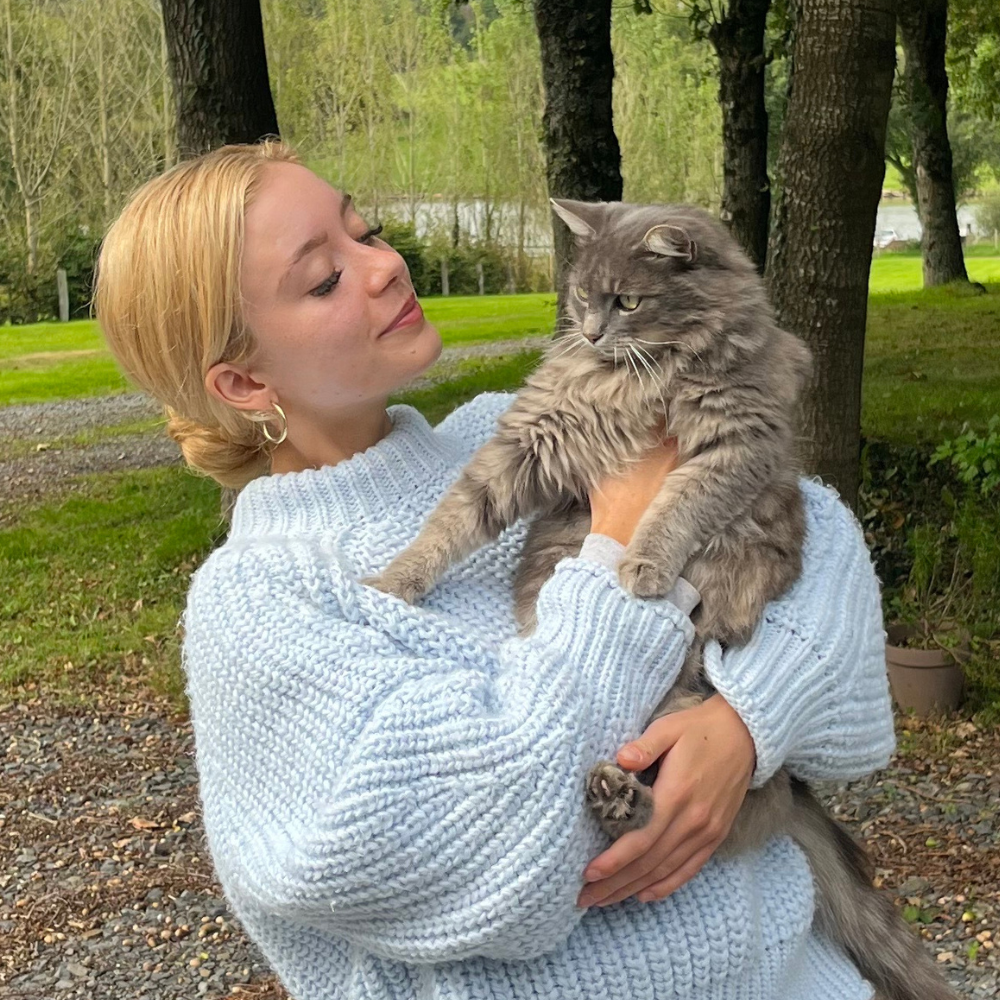
Megan is a Staff Writer at PetsRadar, covering features, reviews, deals, and buying guides. She has a wealth of experience caring for animals, having grown up with dogs, cats, horses, guinea pigs, and more throughout her life. She studied BA Journalism at the University of Westminster, where she specialized in lifestyle journalism and was editor of Smoke Radio’s lifestyle website. Megan works alongside qualified vets and accredited trainers to ensure you get the best advice possible. She is passionate about finding accurate and helpful answers to your pet-related questions.
